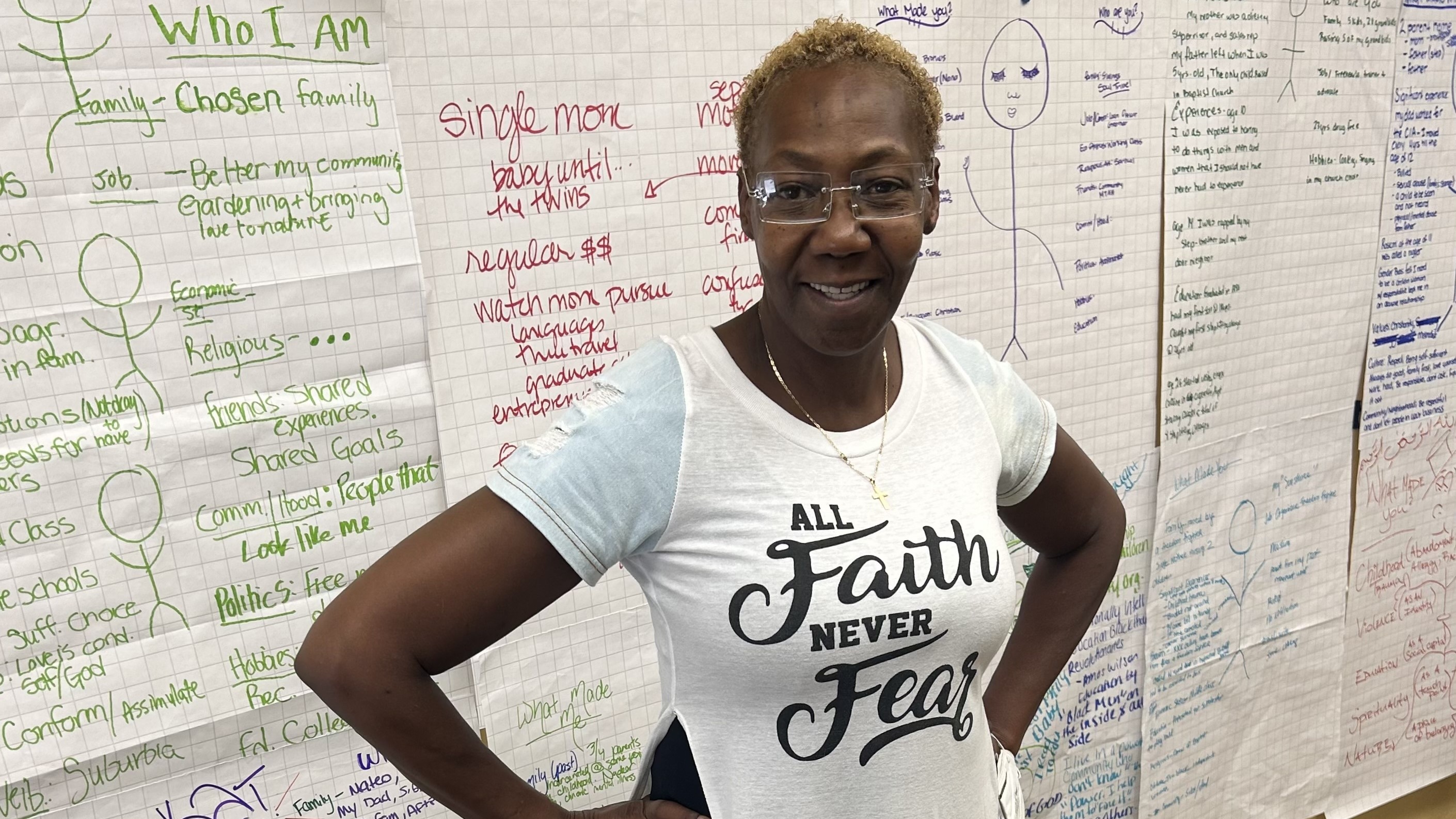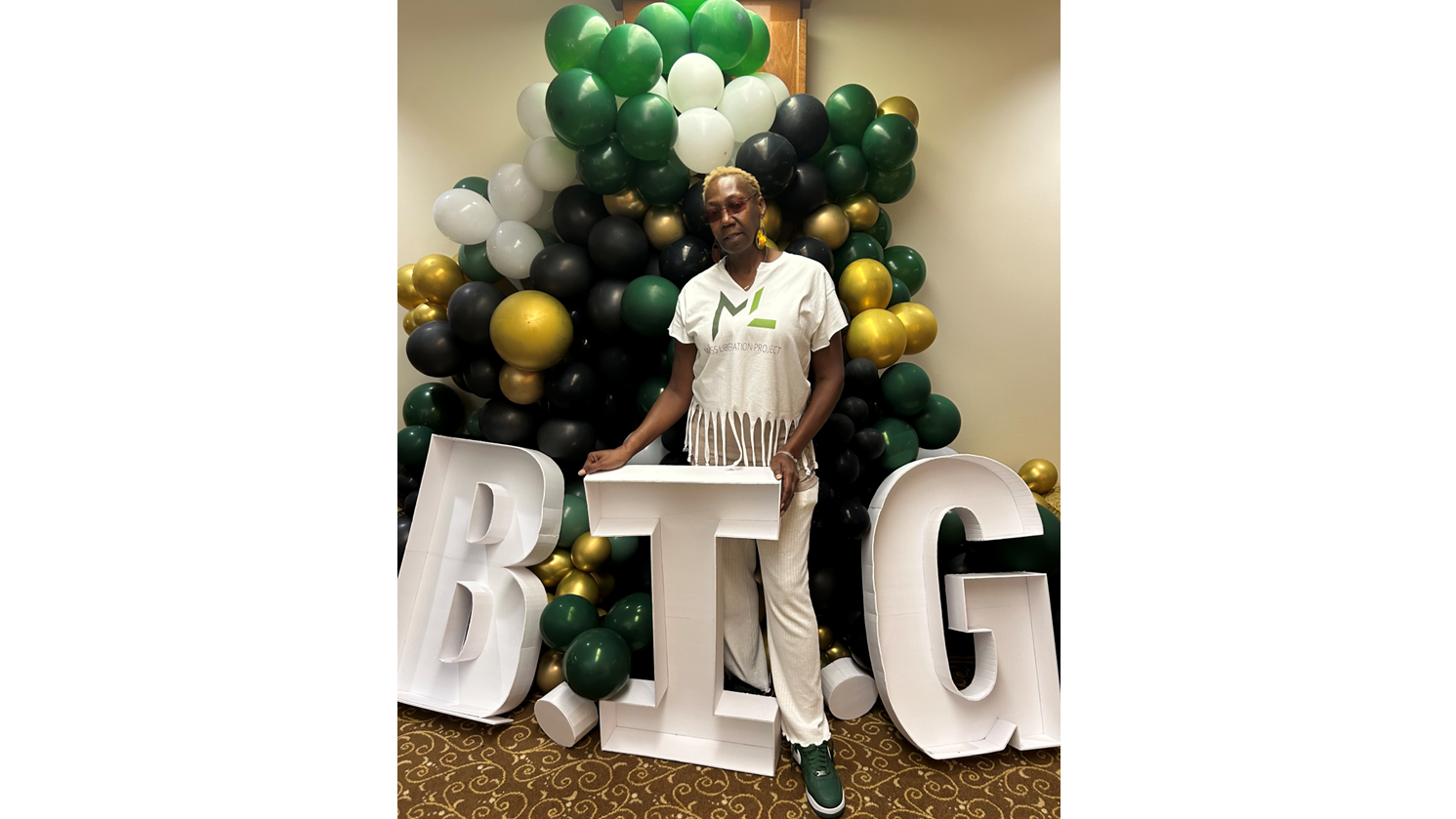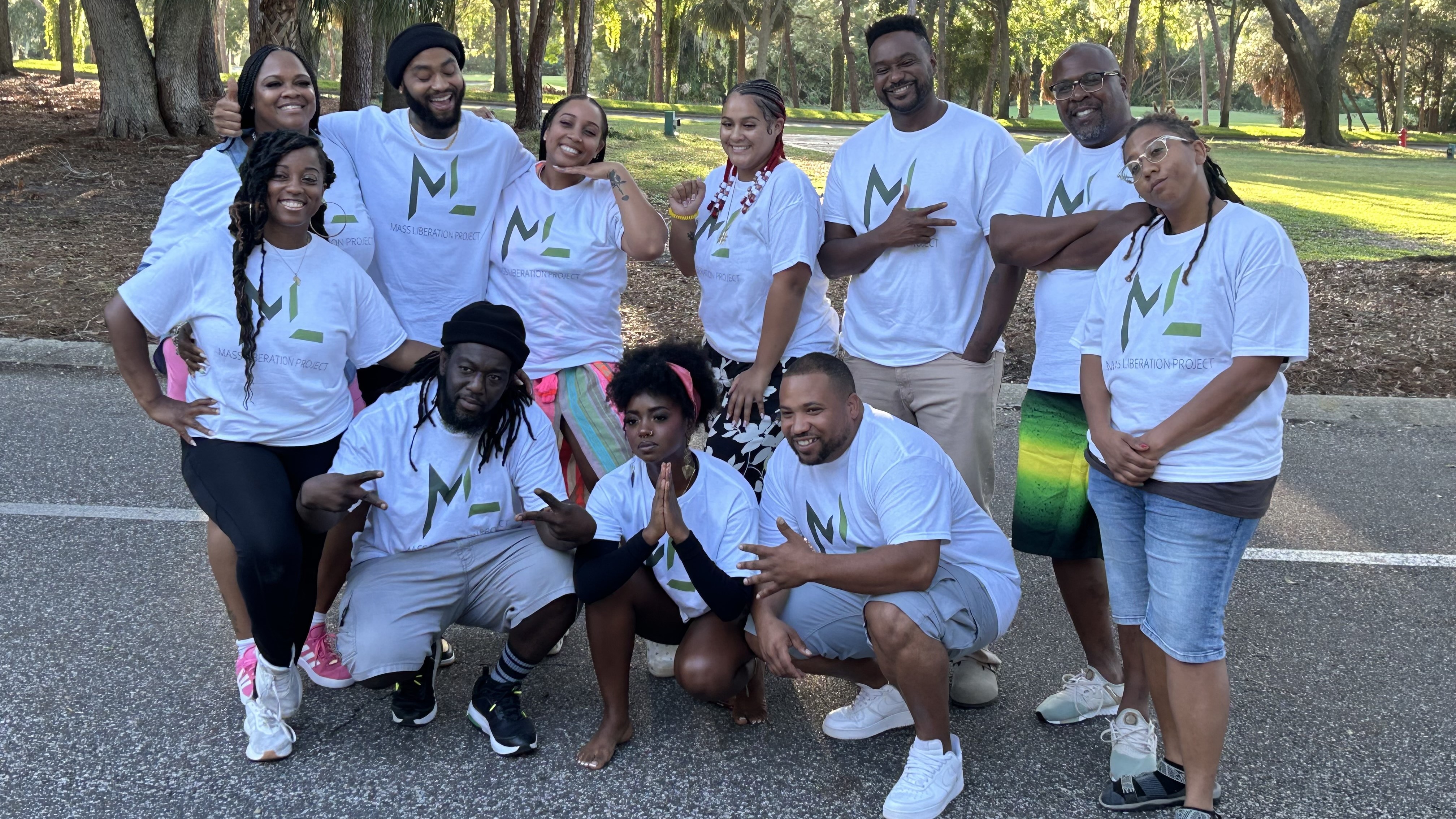
LaWanda Hollister at the Black Intensive Groundwork (BIG) training in Florida
In August 2024, LaWanda Hollister, statewide organizer with the AFSC Michigan Criminal Justice Program, attended a Black Intensive Groundwork (BIG) training in Florida. Sixty organizers from 13 states joined her at the event.
It was hosted by the Mass Liberation Project, which is “a community for personal transformation, training, coaching, healing, visioning, relationship building, strategy and analysis development for Black organizers who are directly impacted by the system.” BIG defines somatics as a “healing methodology that utilizes body-based practices to create more awareness in our soma for the sake of our individual and collective liberation.”
LaWanda served 34 years in prison before obtaining her freedom. She’s worked with AFSC for the past two years. In this interview, LaWanda describes what she learned at the training and how it applies to her organizing work for Second Look legislation in Michigan.
Please share about your experience at the training.
The somatics and organizing training was led by Mass Lib Project staff – Alex Muhammad and Brandon Sturdivant. They’ve been doing it for several years. Here in the AFSC Michigan office, we do somatics trainings on a regular basis with a young lady named Anna.
Of course, I’m always eager to sign up for anything that will make me an efficient organizer. I learned a lot about things that I could use in our workspace, moving forward our project. A lot of ways to handle certain situations.
I told Natalie Holbrook-Combs [AFSC Michigan Program Director] that the somatics trainings we have in the AFSC office are about stabilizing ourselves so we can get through the work. The somatics training at BIG was for us to be able to heal, so that we can help others heal and do the work. Because I can’t help you if I’ve got issues – it just doesn't work that way.

What does somatics training look like?
It’s basically a connection with self in order to sustain and be able to cope and handle life.
An example is when you’re in a car and the people in front of you aren’t going fast enough. You’re sitting back there pissed off and thinking, “I have to hurry up to get to work, I have to do this, I have to do that.” All you’re doing is elevating your anger.
Somatics has helped me to use a different perspective. OK, maybe they just learned to drive. I don’t know what they’ve got going on. I’m visualizing something else about why these people are going so slow in this car.
That allows me to calm down and go with the flow. Being able to cope and deal with things, people and situations so you can have the best outcome. This helps me control my issues and see things in a different light.
In the organizing context, how do these somatic exercises apply?
As an organizer, I’m supposed to be building power. Nicholas Buckingham from Michigan Liberation is the person who invited me to the BIG training. He said I’m really an advocate.
He wants me to take my advocation and use my organizing skills to get done the things I’m advocating for. I always thought it was either/or -- I’m either an advocate or an organizer. That’s not the truth. I am both. I need to be able to balance it out and use both skills.
Somebody will say something, and I’ll be like, “I don’t think that or feel that.” And it’s simply my opinion. But I need to take others’ opinions and weigh them out see what it is I can or can’t use.
I’m a very strong believer in perspective. It’s really helped me stay grounded. I take everything I learn and use it with perspective. That’s how I navigate my life.

Some other facilitators at the BIG training LaWanda Hollister
Are there exercises you do that are part of this somatic work?
There’s a group exercise we do in the AFSC office called “rowing.” When things get out of whack around here, we row together.
We get in a circle and start rowing. We all rock back and forth and use our hands like we’re rowing a boat. When it starts out, everybody is rocking and rowing to their own rhythm. Some are going really slow – like, “I’m tired and don’t really want to do this.” And some are going really fast, like “Let me hurry up and get this over.”
But if you ground yourself and continue to row, and you all keep rowing – when you look around, you’re all rowing at the same pace, and we’re rowing together. What that does is create unity – us being able to come together and move forward together. So we’re all in the same space.
I love rowing. Whenever they say we need to row, here we go. The result is breathtaking. It centers us all together, and we’re working as one.
I heard recently about the effects of people dancing together. You move together and your hearts sync up.
Natalie has helped me a lot. She’s part of my village. You know I love Natalie. She was my LOL before she was my boss. LOL stands for “LaWanda’s Old Ladies.”
Getting into this work, I want to be heard, and I want to be treated fairly. I want to do what everyone else has been out here doing. Natalie, in her wisdom, when she sees I’m doing too much, she’ll pull me aside and ask, “What do you have going on?” We’ll have one of our talks.
She’s introduced somatics to us, and we’ve been working with it. Then I got invited to BIG, and I love it. Now I have even more of a village and extended family.
Your main focus is organizing for Second Look legislation? How’s your work going in connection to what we’re talking about today?
The whole thing with Second Look is trying to get it passed. That’s it.
People think it’s all up to the legislators, who make the ultimate decisions. But they make those decisions based on their constituents. So it’s really up to us. I’m always saying -- I’m not trying to change anyone’s mind, I’m simply trying to give information for them to make their own decision.
That’s what I do in the communities. Trying to bridge the gap of understanding about what’s really going on and what Second Look is really about. What will be the point and purpose of it?
My being able to go to BIG and learn how to properly do one-on-ones and make connections, trying to take the feedback and such. I was able to hone in on that and see how I can use what they were teaching me as part of my advocacy for Second Look.
Do you think that when most people have the information, they make the right decision about Second Look?
Absolutely. If I tell you to support Second Look, you’ll want to know what it’s about. Because the first thing you’ll say is, “We don’t want to let all those people out of prison.” That’s people’s first reaction. Because they don’t understand that many of these people have been in prison for 30, 40 or 50 years.
This is not just a “get out of jail free card.” Because I was in prison for 34 years. This is a process of the judge taking the opportunity to look at what someone’s been doing in prison for all these years. The things they didn’t look at when you’re initially charged.
I’m an example. They didn’t look at the fact that I was 17 because I was charged as an adult. They didn’t look at the fact I wasn’t even from Michigan. I was up here by myself. They didn’t look at those things before they charged me. Yes, I committed a crime, but they didn’t look at anything surrounding the crime. They just looked at the crime.
So now, what Second Look does is afford the judge the opportunity to look at those things, at the things you’ve done while you’re incarcerated so you can be released back into society before it’s too late – before the state is spending hundreds of thousands of dollars to take care of you in your old age.

LaWanda Hollister advocates for Second Look legislation outside the Michigan Capitol. Mary Zerkel
Second Look would mean so much to people still inside, wouldn’t it?
Absolutely. I say this all the time. There are only two things that can happen when you go to prison. One, you’ll either die there, or two, you’ll get out. That’s all.
The only thing that keeps you going is hope. When you’re incarcerated, you hear so many falsehoods about different laws and legislation, acts and rumors. But the only thing that people have inside is hope. You’ve got nothing else.
Nothing else matters. Money, intelligence – they don’t matter. Only hope gets you through each day. If you don’t have hope, you’re done for. Second Look is the opportunity for everyone to hope.